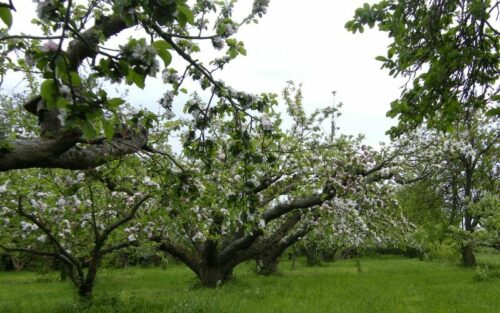Can You Prune Mulberry Trees In The Summer? The best time for pruning is spring for a young tree, and late fall or early winter for an older tree.
Their scrumptious berries, and the stains left behind by the previously mentioned berries.
The coloring of the berries can vary from red to purple.
But it is important to note that not all mulberry trees are actually capable of producing fruit.
Can You Prune Mulberry Trees In The Summer?
The average tree can easily grow up to 70 feet tall, depending on the specific species.
As a result of their quick growth, it is oftentimes necessary for them to be pruned on a regular basis.
You may find yourself wondering “Can you prune mulberry trees in summer”?
We would love to provide you with some guidance regarding that question.
The proper technique for pruning mulberry trees will be entirely dependent upon your landscaping goals.
If you are striving to have a nice shady spot for birds and other creatures to call home.
Can You Prune Mulberry Trees In The Summer?
It would be best to only cut the smaller branches.
That are likely dead, damaged, diseased, or in an awkward position.
In this instance, it is recommended that the trimming of the mulberry tree.
Be performed every two to three years.
If your main goal is to enjoy the fruit produced by the tree yourself and with family.
Then it would be best for pruning to be done on a yearly basis.
This is to help keep the size of the tree under control and ensure that it does not get out of hand.
It also has the added benefit of keeping the majority of the berries within a distance that is easily accessible.
You may also find it beneficial to be aware of the fact that mulberries will typically bloom and fruit in the same exact spot that the previous year’s growth did.
As a result, very extensive and continuous pruning will lead to an overall reduction in the amount of fruit that is produced.
If you have a mulberry tree that is a bit too large for the space that it is currently in.
You should be aware of the fact that there are actually specialized techniques to handle this issue.
The technique is known as pollarding.
Pollarding is the process in which the smaller branches of the tree are removed on a yearly basis.
To a predetermined area on bigger scaffold branches.
However, you probably should not attempt to perform this technique yourself.
As it has a very high failure rate that can actually be unsafe.
Also, lead to your tree becoming damaged and diseased.
It is best to leave this technique to those who are experienced.
To begin the process of pruning your mulberry tree.
It is essential to ensure that you have the proper tools on hand.
Proper tools will be ones that are adequately sharpened and clean.
You should steer clear of dull tools as they can cause the job to be much more difficult.
Than it needs to be and actually has the potential to be dangerous.
If you notice that you are at all struggling whilst attempting to prune the tree.
You should immediately take a step back and discontinue your attempt.
This is a sign that the tool that you are trying to use is much too small to accomplish the job successfully.
It is recommended that a hand pruner is used for any cuts that need to be made under six inches.
Loppers should be used for any cuts within the range of an inch to two inches.
Speaking of one-inch cuts, a good saw can also be used to perform this task.
You should avoid cutting any branches that exceed two inches in diameter.
It would also be a wise decision to avoid cutting large branches.
Unless you are willing to accept the high likelihood that any wounds that are incurred.
Will not heal in a timely manner.
Instead, it will take a substantial amount of time.
And will lead to pests attacking the tree and diseases running rampant.
It is important to note that the pruning of a mulberry tree can occur at any time.
But it is best that it happens during the winter months.
This is because the tree is dormant during this period of time.
Resulting in a lessened chance of structural damage occurring.
It also ensures that the tasty fruit is not going to waste.


